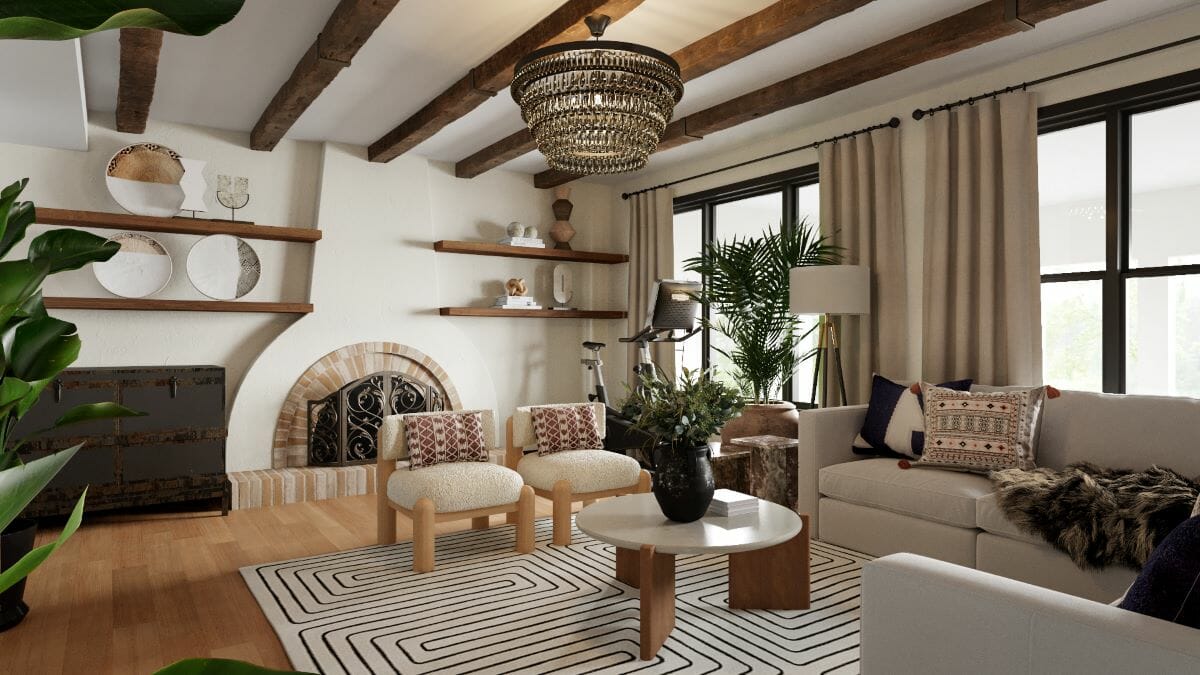Spanish Interior Design History and Evolution

The history of Spanish interior design is a rich and varied one, influenced by a multitude of cultures and periods. From the Moorish influences of the Middle Ages to the Baroque and Rococo styles of the 17th and 18th centuries, Spanish interior design has evolved to reflect the country’s unique history and culture.
Spanish interior design, with its vibrant colors and intricate patterns, has long been a source of inspiration for interior designers worldwide. For those seeking a more contemporary take on this classic style, hudson interior design offers a range of services that blend traditional Spanish elements with modern design principles.
Whether you’re looking to create a cozy and inviting living room or a sleek and sophisticated dining space, hudson interior design can help you achieve your dream home.
Key Characteristics of Traditional Spanish Interior Design
Traditional Spanish interior design is characterized by its use of warm colors, rich textures, and intricate details. Common elements include:
- Earthen tones such as terracotta, ochre, and olive green
- Textiles such as velvet, silk, and wool
- Ornate furniture with carved details
- Wrought-iron accents
- Ceramic tiles
Key Elements and Characteristics of Spanish Interior Design

Spanish interior design is a vibrant and eclectic style that draws inspiration from various cultural influences, including Moorish, Mediterranean, and Baroque. It is characterized by its use of bold colors, intricate patterns, and rich textures, creating a warm and inviting atmosphere.
Color
Color plays a vital role in Spanish interior design, with warm and earthy tones dominating the palette. Shades of red, orange, yellow, and gold evoke the sun-drenched landscapes of Spain. These colors are often balanced with cooler hues, such as blues and greens, to create a harmonious and inviting space.
Patterns and Textures
Intricate patterns and rich textures are hallmarks of Spanish interior design. Geometric motifs, floral prints, and damask fabrics add visual interest and depth to a room. The use of natural materials, such as wood, stone, and leather, adds warmth and authenticity to the space.
Furniture
Spanish furniture is typically heavy and ornate, with carved details and intricate metalwork. Common furniture pieces include elaborately carved wooden chairs, leather-upholstered sofas, and wrought-iron chandeliers. These pieces often feature intricate designs and bold colors, reflecting the artistic heritage of Spain.
Lighting and Accessories
Lighting and accessories play a crucial role in completing the Spanish interior design aesthetic. Wrought-iron chandeliers and sconces provide ambient lighting, while colorful tiles and ceramics add a touch of vibrancy to the space. Mirrors, artwork, and textiles are used to reflect light and add a personal touch to the room.
Modern Interpretations of Spanish Interior Design

In contemporary design, elements of Spanish interior design are being seamlessly incorporated into modern spaces, creating a fresh take on traditional styles. Designers are experimenting with updated materials, colors, and patterns while preserving the essence of Spanish design principles.
Use of Updated Materials
Contemporary Spanish interior design often incorporates modern materials such as glass, metal, and concrete. These materials add a sleek and contemporary touch while complementing the traditional elements of Spanish design, such as intricate tilework and wrought iron.
Bold Colors and Patterns
Traditional Spanish interiors are known for their vibrant colors and bold patterns. Modern interpretations embrace this aspect while incorporating more muted tones and geometric patterns. Designers are using colors like navy, emerald green, and mustard yellow to create a sophisticated and eclectic look.
Application in Contemporary Architecture and Interior Design Projects
Spanish design principles are being applied in various contemporary architecture and interior design projects. For example, the use of arches and courtyards is a nod to traditional Spanish architecture, while modern materials and furnishings bring a contemporary touch. In interior design, Spanish-inspired elements like tilework, wrought iron, and intricate carvings are used to create a warm and inviting atmosphere.
Spanish interior design is renowned for its vibrant colors and intricate patterns. To achieve a modern twist on this classic style, consider incorporating digital wallpaper into your decor. Digital wallpaper offers a wide range of designs, from traditional motifs to abstract patterns, allowing you to create a unique and personalized space that reflects the warmth and charm of Spanish design.